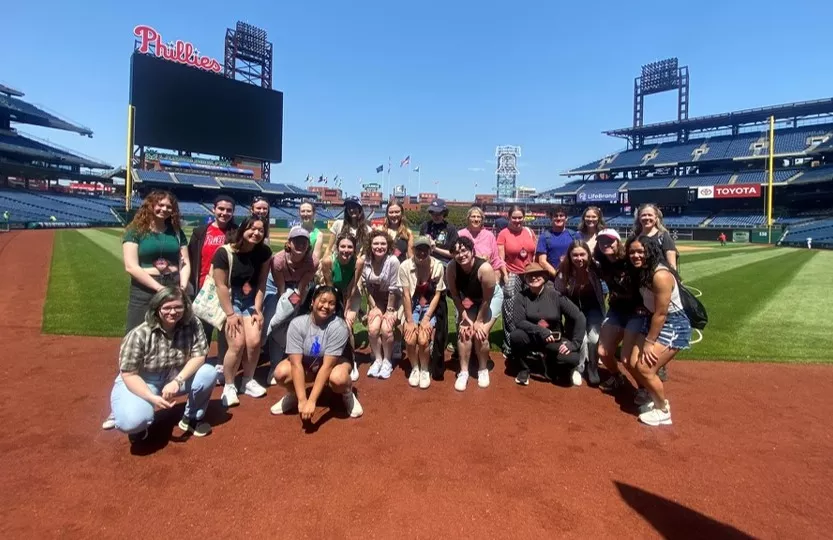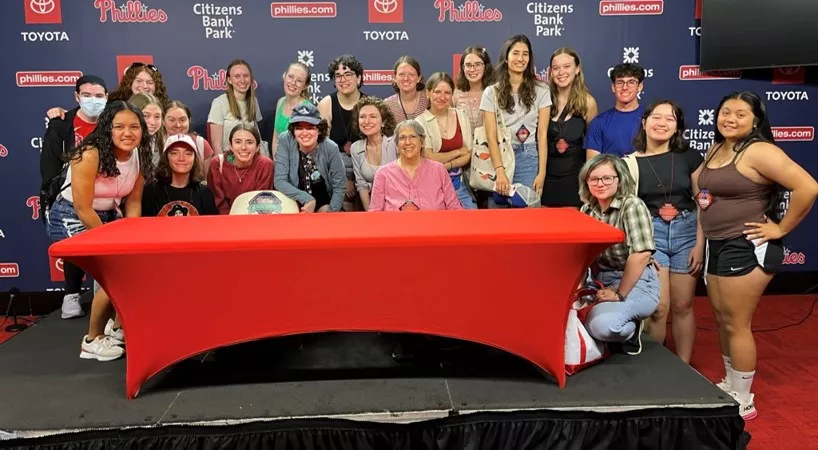
Baseball occupies a unique, almost mythological, ideological space as “the national pastime,” with all sorts of ideas about what it means to be American wrapped around it, explains Professor of History Sharon Ullman when asked about her course Leisure and Social Class: Baseball.
The course is the second part of two paired quarter classes called “The History of Leisure and Social Class.” In the first quarter, students look at the history of tourism. In the second quarter, the history of baseball.
“The principle of both courses is that studying the history of phenomena like social class and race can be seen in other arenas than ones traditionally looked at by most social history courses. And that studying leisure activity can be especially enlightening,” says Ullman.
As an example, Ullman points to the urban origins of the sport that many now think of as being synonymous with the pastoral heartland of Field of Dreams.
“Urban mid 19th-century middle class men were looking for a leisure activity outdoors (they had time for leisure because of their class status). They created networks of amateur clubs who played each other in cities across the east coast. Arriving immigrant men working in those cities saw the amateur baseball club structures of middle class men and emulated that as a way to both assimilate and become ‘American’ as well as to express an aspiration to middle class status,” says Ullman.
And like nearly every aspect of the American story, baseball has been shaped and impacted by the racism woven into the nation’s history.
Although there were a comparatively small number of Black players in the early professional leagues, baseball was not initially racially segregated. As “Jim Crow” laws requiring total racial segregation rolled out in the late 19th/early 20th century American south, professional baseball joined in and banned Black players via a “gentleman’s agreement” among the owners—even though the teams were largely in the north east and midwest, where “Jim Crow” was not formally in place. This helped nationalize segregation even where it was not mandated by state constitutions. This banning also led to the famed parallel Negro Leagues.
“So, baseball—as the 'national pastime'—which was at the height of its popularity in the first half of the 20th century, was a critical force in maintaining white supremacy nationally,” says Ullman. “And, of course, integrating the all-white professional baseball leagues via Jackie Robinson after WWII is considered one of the major moments in civil rights history.”
This spring was the fourth time Ullman had offered the class and the third time she was able to include a trip to a game and an opportunity to meet with some of the people who work behind the scenes to make it possible to “play ball.” Among the staffers the class met this year was Maya Schneider ’22, who works in the Phillies sales department.
In 2013, the class visited the now defunct minor-league Camden River Sharks. In 2016 and this spring the Philadelphia Phillies hosted the class. A visit was slated for 2020 but COVID hit.
“I actually had the tickets in my office drawer and the pandemic shut down the world just as the class began,” recalls Ullman.
Math major Kris Pasia '25 was one of the students who took the class and attended the game.
"Growing up in Houston, I've always been a huge baseball fan," Pasia says. "However, I didn't know much about the history of baseball. The class explored baseball as a mirror of American society, a pattern I hadn't noticed before. America's history of segregation was reflected in the MLB's color barrier. The role of women in a patriarchal American society is present in baseball's exclusion of women. The harsh reality of the 'American Dream,' which many immigrants don't have the chance to achieve, mirrors the many international MLB hopefuls that never make a major league roster and are often forgotten about. Not only did this class reignite my passion for baseball, but it also taught me how to analyze topics in depth."
The History of Leisure and Social Class: Baseball has been among Ullman’s favorite to teach and she was particularly keen to offer it this spring as it is the last semester she’ll be teaching at the College prior to her retirement after 30 years at Bryn Mawr.
“Perhaps someone else will take up the mantle in some version,” says Ullman. “The students love it and it’s such a good class.”
